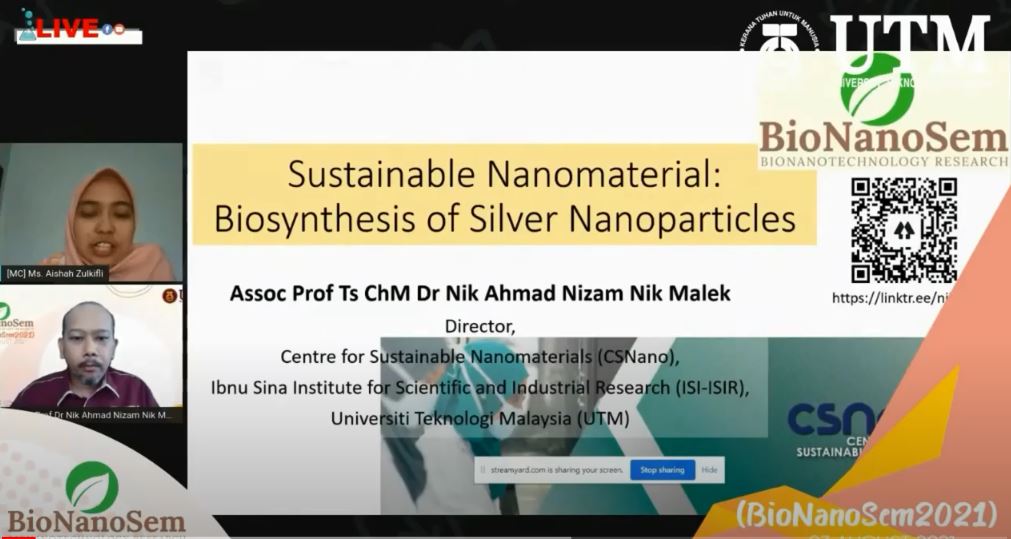|
Nik Ahmad Nizam Nik Malek, Muhammad Hariz Asraf Hassan, Atieya Abdul Hadi, Shahrulnizahana Mohamad Din (2021). Sustainable Nanomaterial: Biosynthesis of Silver Nanoparticles.2nd Bionanotechnology Research Seminar (BioNanoSem2021), Virtual (Streamyard and live in FB group), Centre for Sustainable Nanomaterials (CSNano), UTM, 03 Aug 2021 (Keynote). |
Sustainable Nanomaterial: Biosynthesis of Silver Nanoparticles
Nik Ahmad Nizam Nik Malekab*, Muhammad Hariz Asraf Hassanb, Atieya Abdul Hadib, Shahrulnizahana Mohamad Dinb
aCentre for Sustainable Nanomaterials (CSNano), Ibnu Sina Institute for Scientific and Industrial Research (ISI-ISIR), Universiti Teknologi Malaysia (UTM), 81310 UTM Johor, Malaysia
bDepartment of Biosciences, Faculty of Science, Universiti Teknologi Malaysia (UTM), 81310 UTM Johor, Malaysia
*Email: niknizam@utm.my
Abstract
Sustainable is the ability to be maintained at a specific rate or level. It is usually associated with sustainability-related to fulfilling our needs but keeping or persevering our environment and social and economic development. Hence, sustainable nanomaterials related to any tiny materials (nano: 10-9 m) do not affect our environment. One of them is the biosynthesis approach. The nanomaterials could be synthesized using sustainable materials, such as the synthesis of silver nanoparticles (AgNP) using various biological resources (Plant extract, bacteria, fungi, microalgae, honey, fruit etc.). These biological resources can reduce the negative effects of chemical agents and high energy used in chemical and physical synthesis methods. However, it is crucial to analyze the biological resources before using them as a bioreducing agent in AgNP synthesis. Analyses that can be done for these resources are (but not limited to) chromatographic analysis, infrared spectroscopy, antioxidant assay, reducing power and phenolic and flavonoid contents. There is a positive correlation between these analyses with their ability to synthesize AgNP. It was found that the higher antioxidant activity of the plant extract resulted in a higher capacity to synthesis AgNP. Besides that, using these biological resources is advantageous for large-scale production and future commercialization because of a safe and sustainable approach.
Keywords: nanomaterials; sustainable; silver nanoparticles; biosynthesis


